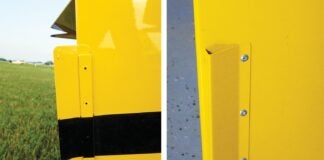Maverick. The word took on new meaning during the 2008 political season, but its original connotation was simply that of an unorthodox or independent-minded person, inspired by a Texas rancher, Samuel A. Maverick, who in the 1800s chose not to brand his cattle. More than a century later, in 1984, Dennis Shattuck, the founding editor of this magazine, was something of a maverick, who challenged conventional aviation wisdom and coined a new term, KITPLANES, which became the title of this publication. Shattuck, well-versed in general aviation, recognized that the number of home-built aircraft was growing, and proposed publishing a directory of manufacturers catering to this group of actual and would-be builders who eschewed the certified aircraft option. KITPLANES branded this new category of aircraft, which were constructed from partially built (prefab) components.
It was a daring move, and it paid off. That Summer 1984 issue sold so well, obviously capturing the imagination of a new throng of aviation enthusiasts, that a second issue was published in October of the same year. Since 1985, KITPLANES has been published monthly, and continues to deliver articles of interest to aircraft builders and those hoping to build. Oh, and we still offer the directories, albeit in more comprehensive and polished form, only now they’re called Buyer’s Guides. No one, not even the perspicacious Shattuck, couldve predicted that we would last this long!
But here we are. In addition to his new responsibilities at KITPLANES, Shattuck was also the editor of a real aircraft magazine, Aero, tailored for owners of high-performance singles and twins. I worked with him on that magazine and was introduced to the homebuilt side of aviation at Oshkosh in 1986. Back then, Id never heard of homebuilts or Experimental aircraft, though Id grown up around airplanes, had a pilots license, owned a Cessna 172, and worked with the Coors Silver Bullet while I was employed in broadcasting. I soon found out that the new kit segment of the market was vibrant, dynamic and fascinating, even as the certificated side of private aviation was in a steep decline. At the time, Cessna had ceased production of singles, and Piper and other GA manufacturers were having financial problems.
In contrast, Burt Rutans innovative composite designs were exciting, and the Voyager was being developed for its eventual nonstop, round-the-world flight. Still, as I walked the show, it raised questions in my mind about who would actually fly in an airplane they had built. The general perception was that homebuilders were retired men who bought a set of plans or a few pre-formed sections, scrounged parts, worked on their projects in their garages, tinkered indefinitely with modifications, and seldom finished or flew their planes. But what I heard when talking to many builders and kit companies at the shows revealed something very different. Homebuilders were doctors, business owners and commercial pilots interested in leading-edge technology, something they couldn’t get from Cessna or Piper, and they wanted to customize their planes for the type of flying they did. We began to conduct regular reader surveys to find out who these builders really were; recent survey results at www.kitplanes.com/howtoadvertise
surveycompare07.pdf.
Then and Now
Hindsight is often 20-20, and many of those early trendsetters have now become institutions. Rutan influenced composite construction in the early 1980s, and Lancair and Glasair came to the fore in the mid- to late 80s. Avid and Kitfox offered their designs to homebuilders in the early 90s, and Vans has experienced tremendous growth in the last decade. Unfortunately, a few dreamers continue to use customer deposits to fund research and development that never fulfills its promise. Moller has been touting its VTOL design for 25 years, and reliable, affordable alternative engines remain a mirage.
However, the industry has facilitated changes in aviation that could be taken for granted until we reflect on developments that Id never have dreamed of a quarter century ago. Rutans ingenuity earned him the X Prize, and his Spaceship One will be leveraged by Richard Bransons Virgin Galactic in the hope of offering affordable space travel, perhaps in our lifetimes. Alan and Dale Klapmeiers Cirrus VK-30 met with limited success in its day, but subsequently led to the most dramatic and successful new airplane introduced in decades, the Cirrus SR20.
An ingenious engine monitor system by Lance Turk (Vision Microsystems), in 1985, and advanced avionics designed for homebuilts by Gordon Pratt (Chelton Flight Systems), in 1997, are now certified products. Myriad reliable, affordable avionics that were introduced and proven in Experimental aircraft have gone on to be certified and have changed for the better the way we all fly today. This is our industrys legacy to the rest of aviation, despite the fact that many of our best products remain out of the certified realm to avoid certification hassles.
Innovation in homebuilding continues unabated. ViperJet has a 500-mph, carbon-fiber luxury fighter, and Lancairs new turbine Evolution is, I think, revolutionary. Rocket Racing, using the Velocity canard, is testing advanced propulsion systems and alternative fuels. Composites are now routinely used on the most advanced airliners. Homebuilts and manufactured sailplanes are undoubtedly responsible, at least in part, for the acceptance of this material.
Throughout 2009, well reflect on the significant milestones of the last 25 years and peer into our crystal ball to predict what might come next. So fasten your seat belts, and enjoy the ride-as we have for the last quarter century.







